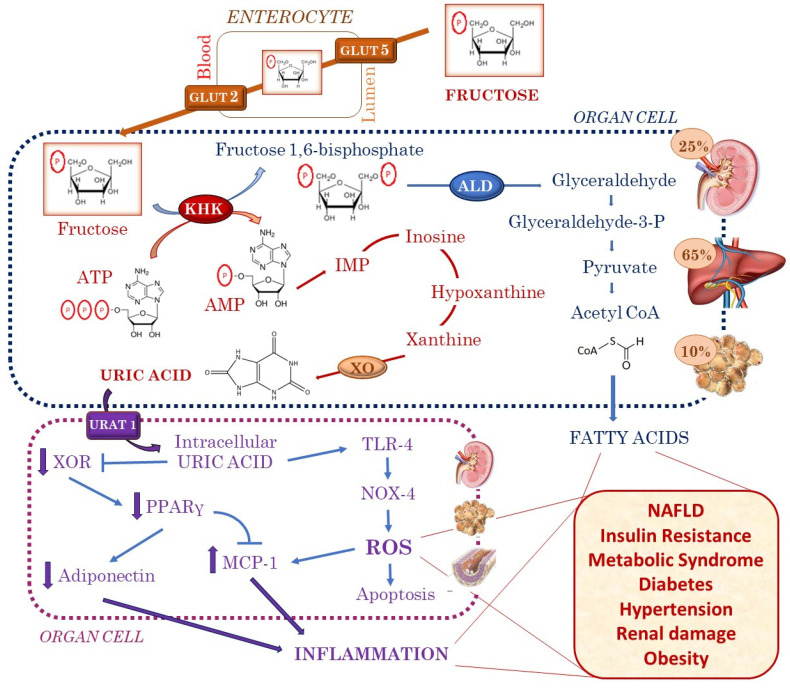Figure 1.
Fructose metabolism: direct effects and those mediated by uric acid. Glut 5 and Glut 2 guide fructose transport into cells where it is metabolized to fructose 1-phosphate by fructokinase (KHK). This reaction induces ATP depletion and causes the activation of AMP deaminase, purine degradation and uric acid generation. In addition, fructose generates glycerol phosphate and acetyl coenzyme A, resulting in fatty acid formation. Uric acid enters renal tubular cells, vascular muscle cells and adipocytes through a specific transporter, URAT-1, and activates NOX, resulting in ROS being generated from superoxide production. Moreover, uric acid can increase the production of MCP-1 and cause a decrease in the production of adiponectin, with a consequent pro-inflammatory response. Uric acid contributes to a pro-inflammatory state, mediated by toll-like receptor 4 with Nox4 up-regulation, promoting apoptosis in human cells. The production of fatty acids, oxidation, inflammation and pro-apoptotic pathways leads to several clinical manifestations, like NAFLD, insulin resistance and metabolic syndrome, diabetes, hypertension, obesity and renal damage, contributing to the increased cardiovascular risk from childhood. Abbreviations: GLUT 2, glucose transporter 2; GLUT 5, glucose transporter 5; KHK, fructokinase; ATP, adenosine triphosphate; AMP, adenosine monophosphate; IMP, inosine monophosphate; ALD, aldolase; XO, xanthine oxidase; XOR, xanthine oxidoreductase; PPARγ, peroxisome proliferator-activated receptor gamma; URAT1, uric acid transporter 1; ROS, reactive oxygen species; MCP 1, monocyte chemoattractant protein 1; Nox 4, NADPH oxidase 4; TLR 4, toll like receptor 4; NAFLD, non-alcoholic fatty liver disease.

